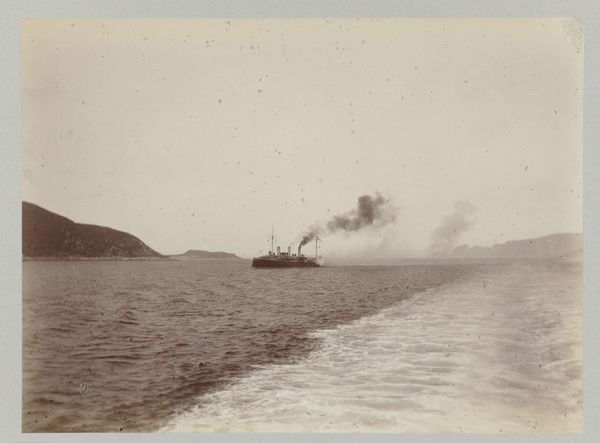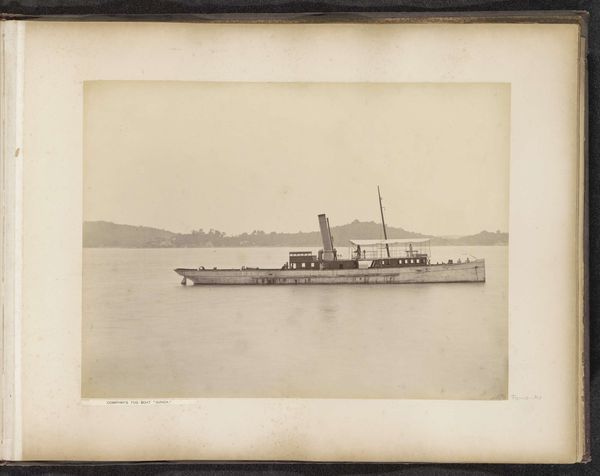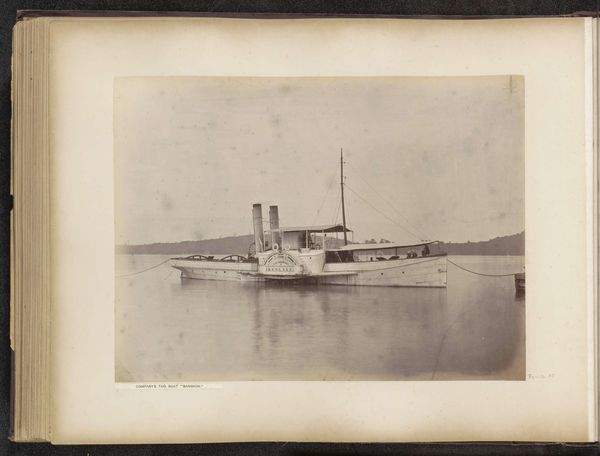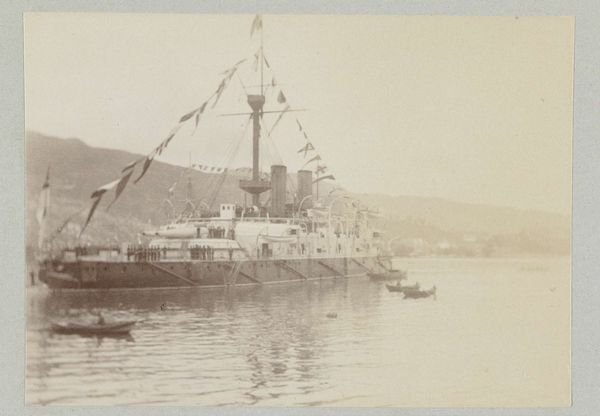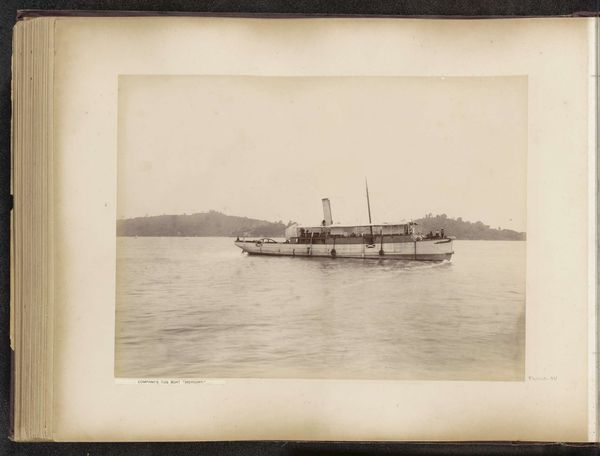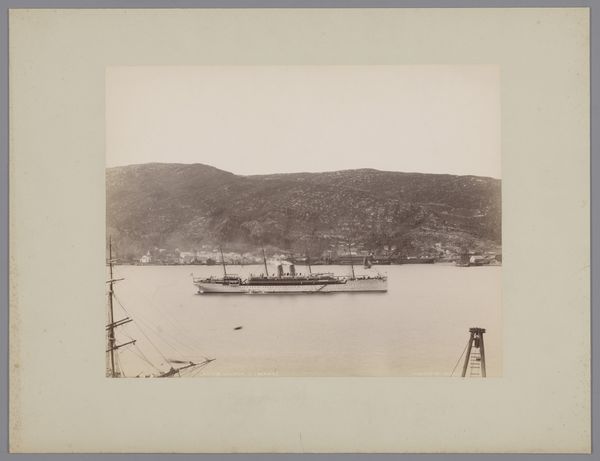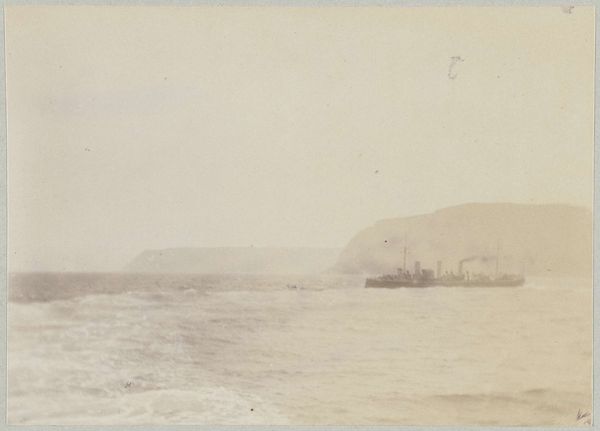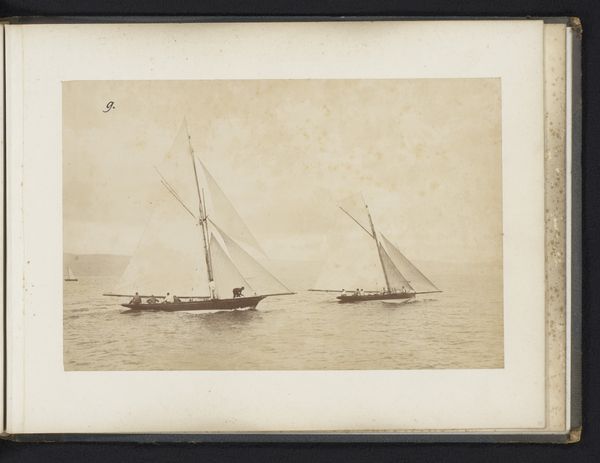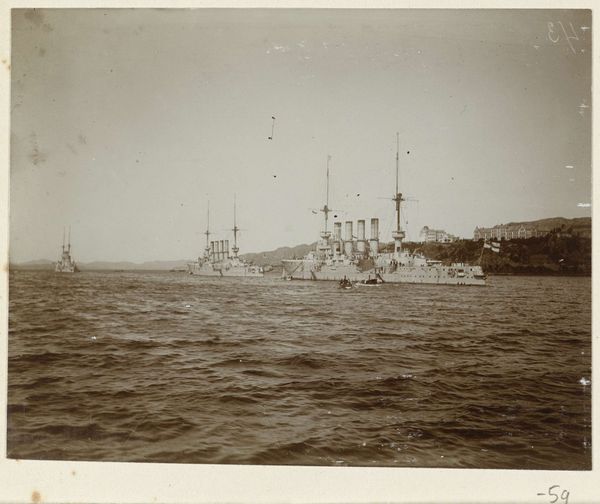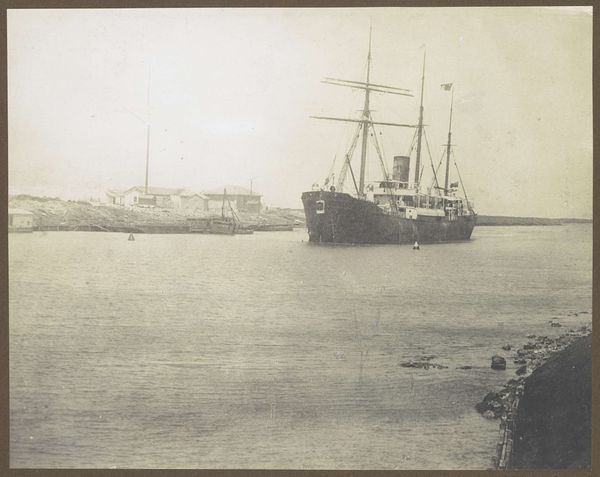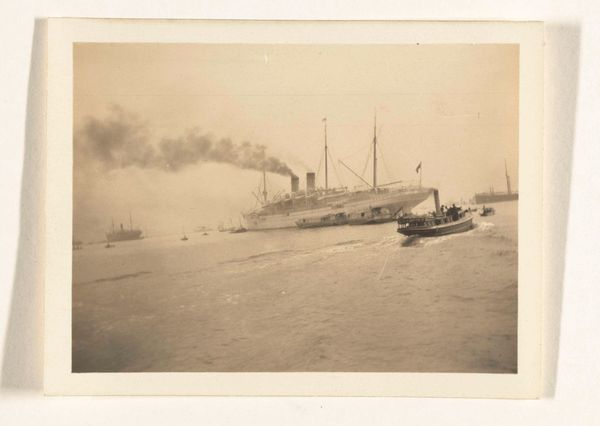
Dimensions: height 165 mm, width 224 mm, height 314 mm, width 450 mm
Copyright: Rijks Museum: Open Domain
Editor: This gelatin-silver print, taken in 1889 by Paul Güssfeldt, captures the Raderschip de Hohenzollern surrounded by small rowboats. It has such a hazy, almost dreamlike quality. What strikes you most about it? Curator: What immediately jumps out at me is the subject matter: the 'Hohenzollern' was the imperial yacht of the German Emperors. Its depiction here isn’t merely a snapshot, but an image steeped in the politics of its time. What statement do you think Güssfeldt might have been trying to make by depicting it in this soft, almost romantic style, almost disappearing into the landscape? Editor: That’s fascinating. I hadn’t considered the political aspect. I guess I saw the haze as creating distance, making it more about the overall feeling of the scene rather than the specifics of the ship. Almost as if the artist was trying to use Pictorialism style to take control of it’s representation? Curator: Exactly. The Pictorialist movement often sought to elevate photography to the level of fine art by manipulating the image and softening the focus, moving the viewer away from political statements.. Here, the soft focus and dreamy atmosphere almost serve to depoliticize the symbol of imperial power, wrapping it in an aesthetic that might appeal to a broader audience, even to those not aligned with the Emperor himself. Editor: So, it's less a glorification of power, and more an attempt to control or perhaps subtly reframe how that power is perceived. Curator: Precisely. It encourages us to consider how photographic images, even seemingly straightforward depictions, can be actively shaped by both artistic intention and prevailing socio-political forces. The photograph is a document but never impartial. Editor: I had been focusing so much on the visual aspect, I completely missed the underlying cultural commentary. Thanks, that gives me a lot to think about! Curator: And you made me think about what art history looks for, what is easily glanced over, the power that aesthetics exert on even hard facts.
Comments
No comments
Be the first to comment and join the conversation on the ultimate creative platform.
